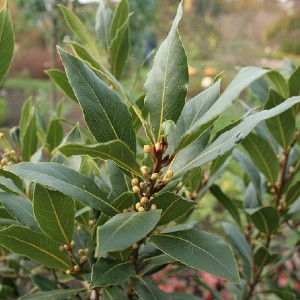Abortifacient activity of Aegle marmelos and Laurus nobilis leaf extracts
 Smart Citations
Smart CitationsSee how this article has been cited at scite.ai
scite shows how a scientific paper has been cited by providing the context of the citation, a classification describing whether it supports, mentions, or contrasts the cited claim, and a label indicating in which section the citation was made.
Rapid elevation of population in India is the one of the major problems, which directly influence the economy of country and may lead to poverty. Government implemented number of family planning programs through the various surgical operations (tubectomy and laproscopy) and oral contraceptives. Usage of oral contraceptive pills may lead serious complications, and may induce congenital abnormalities. The primary goal of this research is to assess the abortifacient activity in rat models of two historically used medicinal plants, Laurus nobilis L. and Aegle marmelos (L.) Corr. Restructure the paragraph as the study included 18 female wistar rats (150-200 g) and six male wistar rats (male wistar rats were used only for copulation). Female rats in proestrous phase were isolated and allowed to mate with males of proven fertility using the mass mating technique in a 3:1 ratio for an overnight. Control animals received an equivalent volume of the dosing vehicle (1% tween 80) orally. Aqueous extract of Laurus nobilis (AQLN) leaves and Ethanolic Extract of Aegle Marmelos leaves (EEAM) at doses of 175 mg/kg and 250 mg/ kg of were orally administrated daily for 10 days from day 0 of pregnancy to day 9. On day 20th of pregnancy, all the animals were sacrificed under euthanasia and the uterine horns were isolated, later they were examined for number of abortifacient sites and deformities of fetuses. The number of live fetuses in animals treated with EEAM at two doses was substantially lower in Group-4 at 175mg/kg (2.63 + 0.36) and Group-5 at 250mg/kg (1.87 + 0.40) compared to the vehicle control group (p 0.05, p 0.01). The survival ratio decreased considerably from 52.2% to 28.8% as the dose increased. Similarly, the abortion rate was higher in group 5 compared to Group-4. AQLN demonstrated to have 100% abortifacient efficacy at 250mg/kg, while EEAM has 83.3%.


 https://doi.org/10.4081/pcr.2023.9657
https://doi.org/10.4081/pcr.2023.9657






